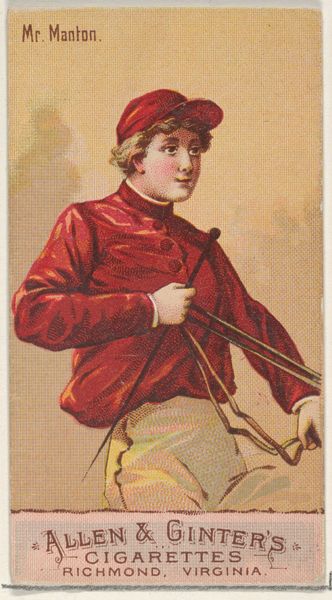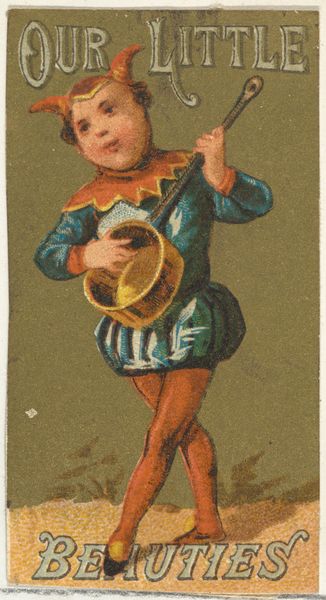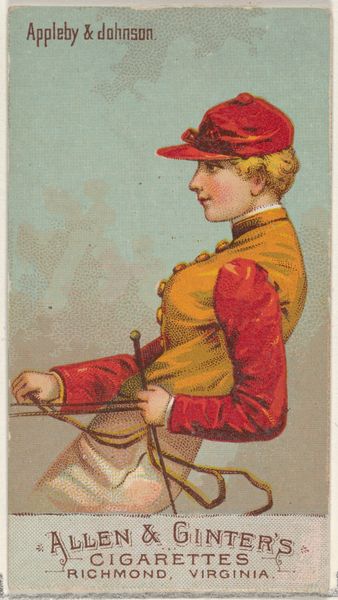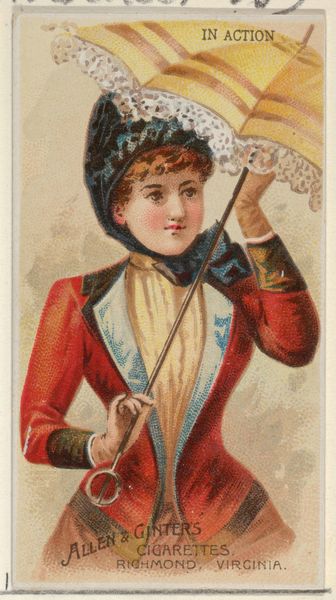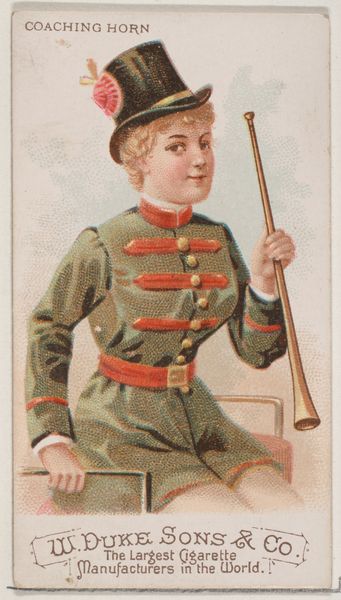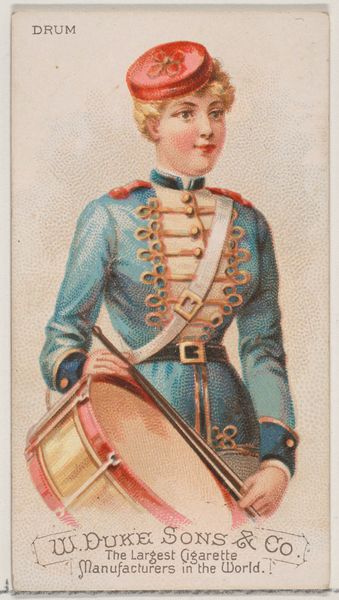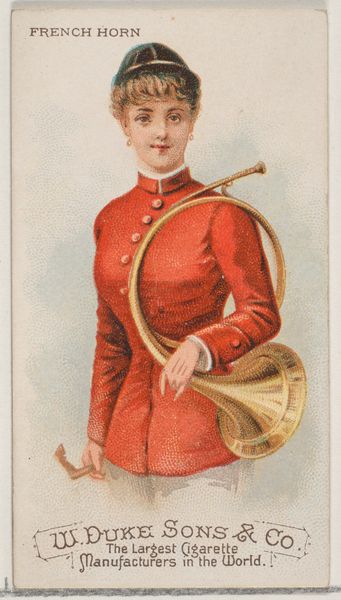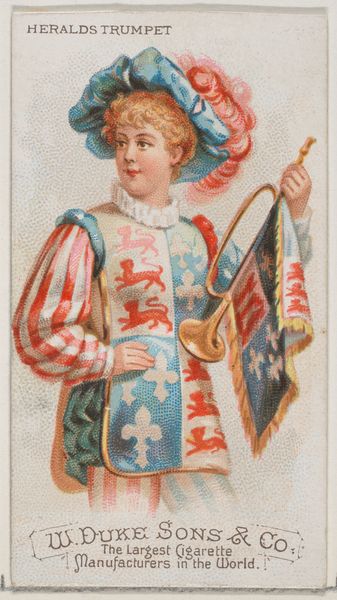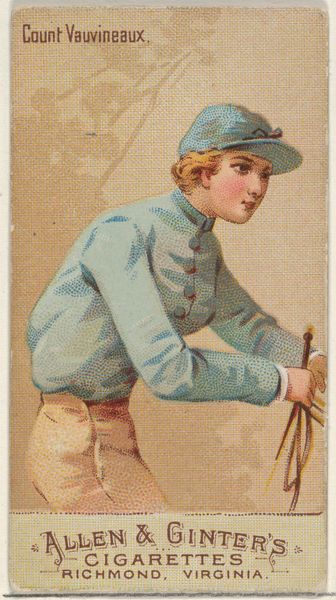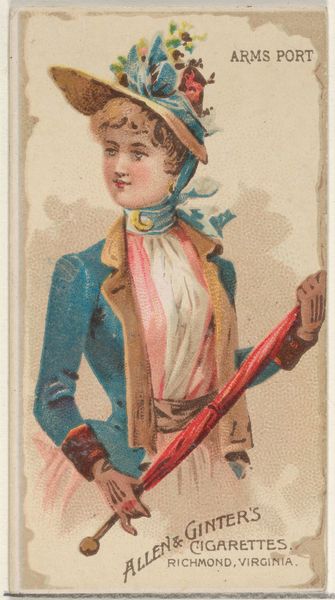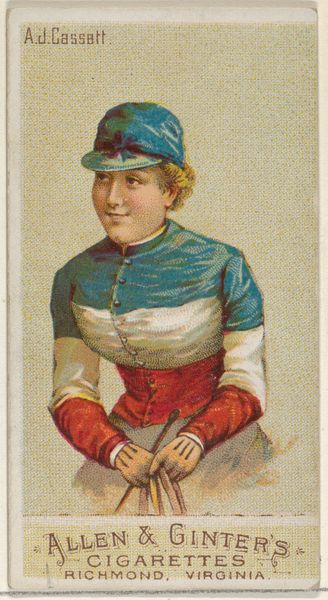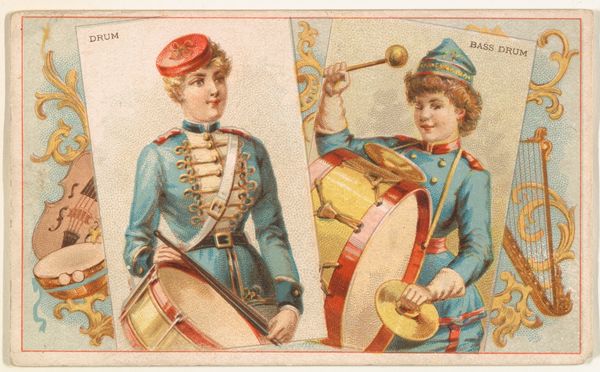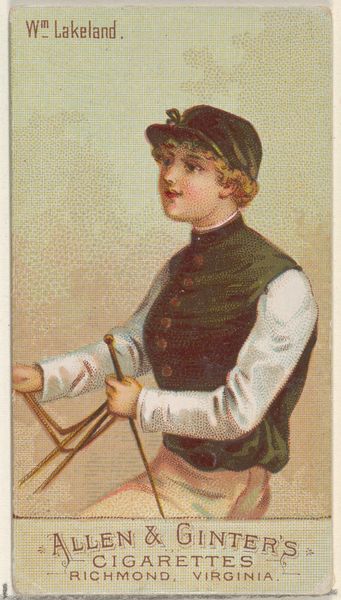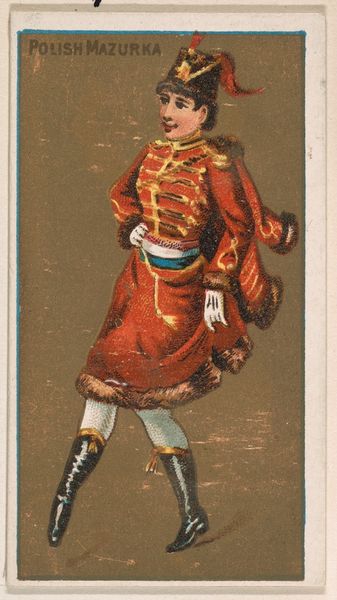
Bass Drum, from the Musical Instruments series (N82) for Duke brand cigarettes 1888
0:00
0:00
# print
#
caricature
#
figuration
#
coloured pencil
#
portrait art
Dimensions: Sheet: 2 3/4 x 1 1/2 in. (7 x 3.8 cm)
Copyright: Public Domain
Curator: Here we have a chromolithograph trading card entitled "Bass Drum, from the Musical Instruments series (N82)," printed in 1888 by W. Duke, Sons & Co., the cigarette manufacturer. What are your first thoughts? Editor: Well, besides the obvious oddity of a cigarette company issuing art, I’m immediately struck by the sheen of the gold ink on the drum and cymbals. It practically screams ‘consumerism,’ while also hinting at the object’s means of production. Curator: Absolutely. It's crucial to remember this wasn't made in a vacuum. Duke was directly marketing to consumers, but there's a level of Orientalism occurring, appropriating aesthetics—that would appeal to its customer base by aligning the brand with sophisticated, worldly values, a phenomenon known as Japonisme. Editor: Right, it uses a familiar trope, portraying a woman in a kind of playful musician’s uniform. Note the construction of the uniform itself, and its implicit association to manufactured cloth, assembly-line buttons and its reference to gender performance. Curator: How does the fact that a female drummer—depicted in an assertive pose—align with prevailing gender roles of the 19th century? Editor: This brings forth discussions around representation. Here is a woman taking a space of performance, activity, almost defying social expectations while still contained within the confines of idealised beauty—pink cheeks and all. The entire thing becomes about manufacturing desire on multiple levels. Curator: So, where does that lead you in thinking about the symbolism and cultural meaning? Editor: Ultimately, it speaks to the interwoven strands of art, consumerism, and labor at the time. Cigarettes weren't just things to smoke, they came wrapped in visuals that performed culture. The artist, the printers, the leaf pickers all wrapped in this neat little package of cultural ideas. Curator: And, conversely, considering that, this piece compels us to ask who made those bass drums and who was restricted from playing them? Editor: A simple object, a window to larger realities of gender and industrial society.
Comments
No comments
Be the first to comment and join the conversation on the ultimate creative platform.
